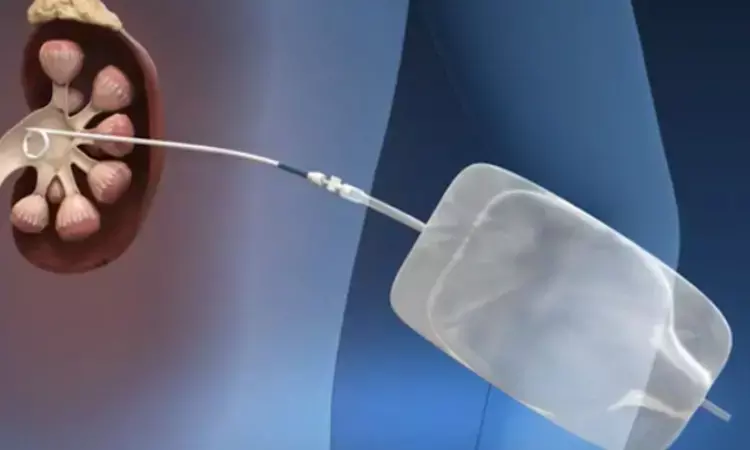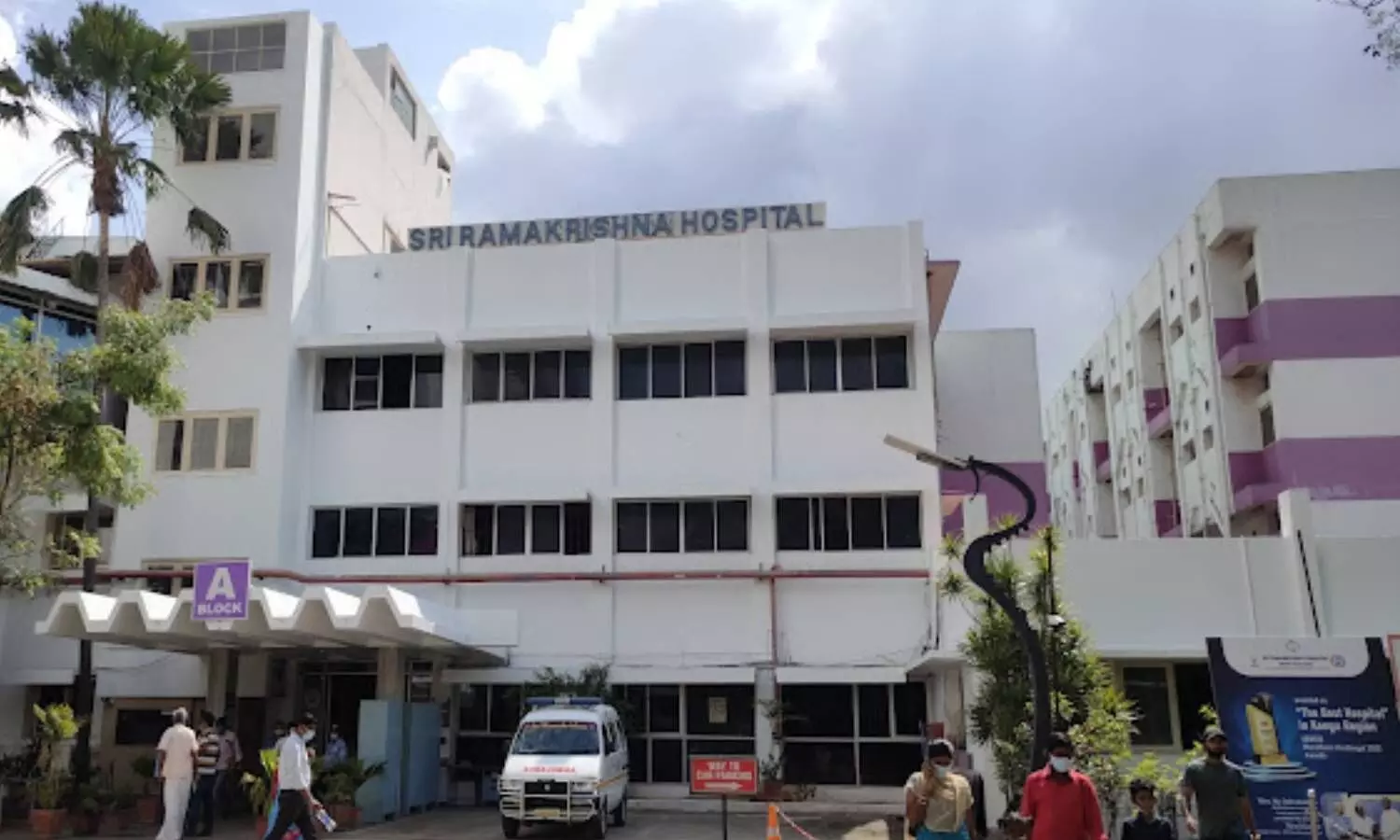- Home
- Medical news & Guidelines
- Anesthesiology
- Cardiology and CTVS
- Critical Care
- Dentistry
- Dermatology
- Diabetes and Endocrinology
- ENT
- Gastroenterology
- Medicine
- Nephrology
- Neurology
- Obstretics-Gynaecology
- Oncology
- Ophthalmology
- Orthopaedics
- Pediatrics-Neonatology
- Psychiatry
- Pulmonology
- Radiology
- Surgery
- Urology
- Laboratory Medicine
- Diet
- Nursing
- Paramedical
- Physiotherapy
- Health news
- Fact Check
- Bone Health Fact Check
- Brain Health Fact Check
- Cancer Related Fact Check
- Child Care Fact Check
- Dental and oral health fact check
- Diabetes and metabolic health fact check
- Diet and Nutrition Fact Check
- Eye and ENT Care Fact Check
- Fitness fact check
- Gut health fact check
- Heart health fact check
- Kidney health fact check
- Medical education fact check
- Men's health fact check
- Respiratory fact check
- Skin and hair care fact check
- Vaccine and Immunization fact check
- Women's health fact check
- AYUSH
- State News
- Andaman and Nicobar Islands
- Andhra Pradesh
- Arunachal Pradesh
- Assam
- Bihar
- Chandigarh
- Chattisgarh
- Dadra and Nagar Haveli
- Daman and Diu
- Delhi
- Goa
- Gujarat
- Haryana
- Himachal Pradesh
- Jammu & Kashmir
- Jharkhand
- Karnataka
- Kerala
- Ladakh
- Lakshadweep
- Madhya Pradesh
- Maharashtra
- Manipur
- Meghalaya
- Mizoram
- Nagaland
- Odisha
- Puducherry
- Punjab
- Rajasthan
- Sikkim
- Tamil Nadu
- Telangana
- Tripura
- Uttar Pradesh
- Uttrakhand
- West Bengal
- Medical Education
- Industry
SRAE effective for treatment of severe haemorrhage following PCNL

The latest research shows that super selective renal arterial embolization is successful in treating severe hemorrhage following PCNL. However, certain factors like hydronephrosis <20 mm, previous ipsilateral renal surgery, multiple bleeding sites, PCNL duration >90 min, solitary kidney, and total ultrasonographic guidance were considered significant risk factors for first embolization failure.
The treatment of significant bleeding after percutaneous nephrolithotomy (PCNL) is super selective renal arterial embolization (SRAE). But, there is still a sizable percentage of failures necessitating another SRAE or nephrectomy. Hence researchers conducted a study to identify the clinical characteristics of patients who underwent super selective renal arterial embolization (SRAE) after percutaneous nephrolithotomy (PCNL) and to explore the risk factors for failed initial SRAE after PCNL.
The research comprised of patients who underwent SRAE for severe hemorrhage following PCNL between January 2014 and December 2020. Analysis of the clinical data of the participants, their parameters, and characteristics of the perioperative PCNL and SRAE procedures were collected and analyzed.
Key findings:
- A total of 243 patients were included in this study.
- A total of 139 patients (57.2%) had a pseudoaneurysm, 25 (10.3%) had an arteriovenous fistula, 50 (20.6%) patients had both a pseudoaneurysm and an arteriovenous fistula, and 29 (11.9%) had an arterial laceration.
- In 177 patients with single percutaneous access, 125 (70.6%) patients exhibited nontract hemorrhage, and 55 (31.1%) patients exhibited multiple bleeding sites.
- In 66 patients with multiple percutaneous access, 44 (66.7%) patients exhibited nontract hemorrhage, and 32 (48.5%) patients exhibited multiple bleeding sites.
- The decrease in Hb before SRAE was 41.4 ± 19.8 g/L.
- The mean time between PCNL surgery and initial SRAE was 6.4 ± 4.9 days.
- Serum creatinine was increased after the SRAE procedure.
- Initial SRAE was successful in 229 (94.2%) patients and failed in 14 (5.8%) patients.
- Hydronephrosis < 20 mm, total ultrasonographic guidance, solitary kidney, previous ipsilateral renal surgery, PCNL duration > 90 min, and multiple bleeding sites were potential risk factors for initial embolization failure as per multivariate regression analysis.
Thus, the primary cause of the significant hemorrhage that occurred after PCNL was not percutaneous access. SRAE is successful when treating severe hemorrhage after PCNL, however, several variables can affect how well the first SRAE works.
Further reading: Zeng T, Wu W, Zhang L, et al. Superselective renal arterial embolization for severe postpercutaneous nephrolithotomy hemorrhage: clinical characteristics and risk factors for initial failure [published online ahead of print, 2023 Apr 8]. World J Urol. 2023;10.1007/s00345-023-04391-2. doi: 10.1007/s00345-023-04391-2
BDS, MDS
Dr.Niharika Harsha B (BDS,MDS) completed her BDS from Govt Dental College, Hyderabad and MDS from Dr.NTR University of health sciences(Now Kaloji Rao University). She has 4 years of private dental practice and worked for 2 years as Consultant Oral Radiologist at a Dental Imaging Centre in Hyderabad. She worked as Research Assistant and scientific writer in the development of Oral Anti cancer screening device with her seniors. She has a deep intriguing wish in writing highly engaging, captivating and informative medical content for a wider audience. She can be contacted at editorial@medicaldialogues.in.
Dr Kamal Kant Kohli-MBBS, DTCD- a chest specialist with more than 30 years of practice and a flair for writing clinical articles, Dr Kamal Kant Kohli joined Medical Dialogues as a Chief Editor of Medical News. Besides writing articles, as an editor, he proofreads and verifies all the medical content published on Medical Dialogues including those coming from journals, studies,medical conferences,guidelines etc. Email: drkohli@medicaldialogues.in. Contact no. 011-43720751




